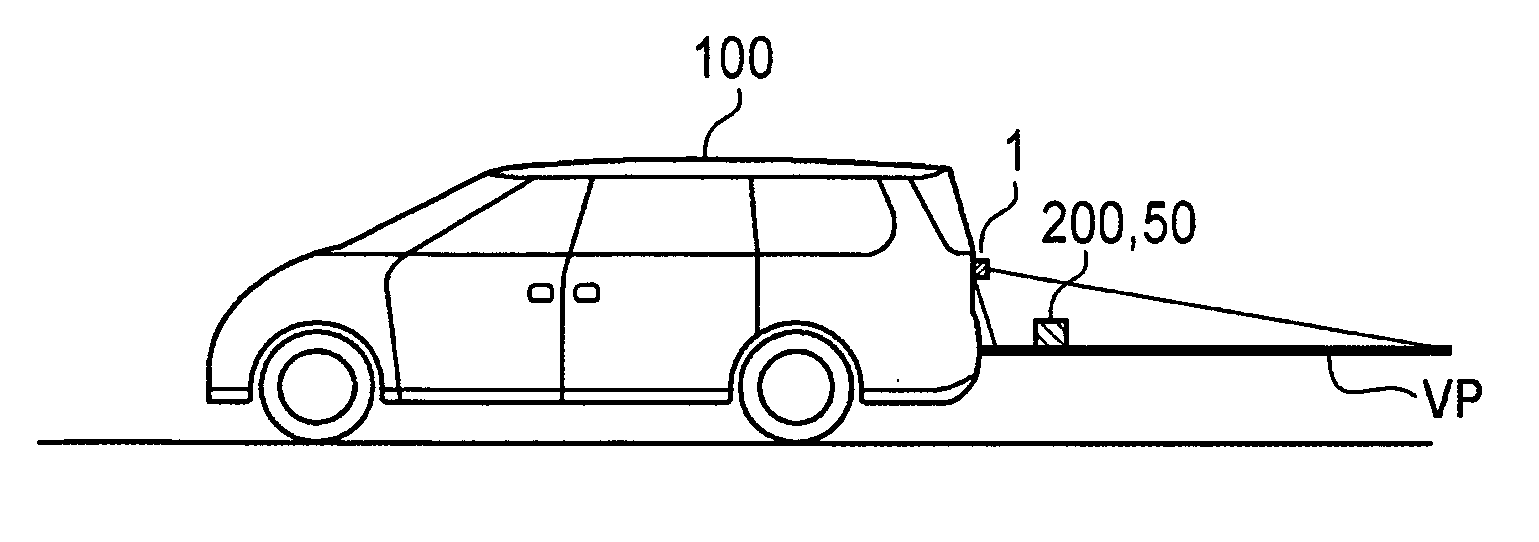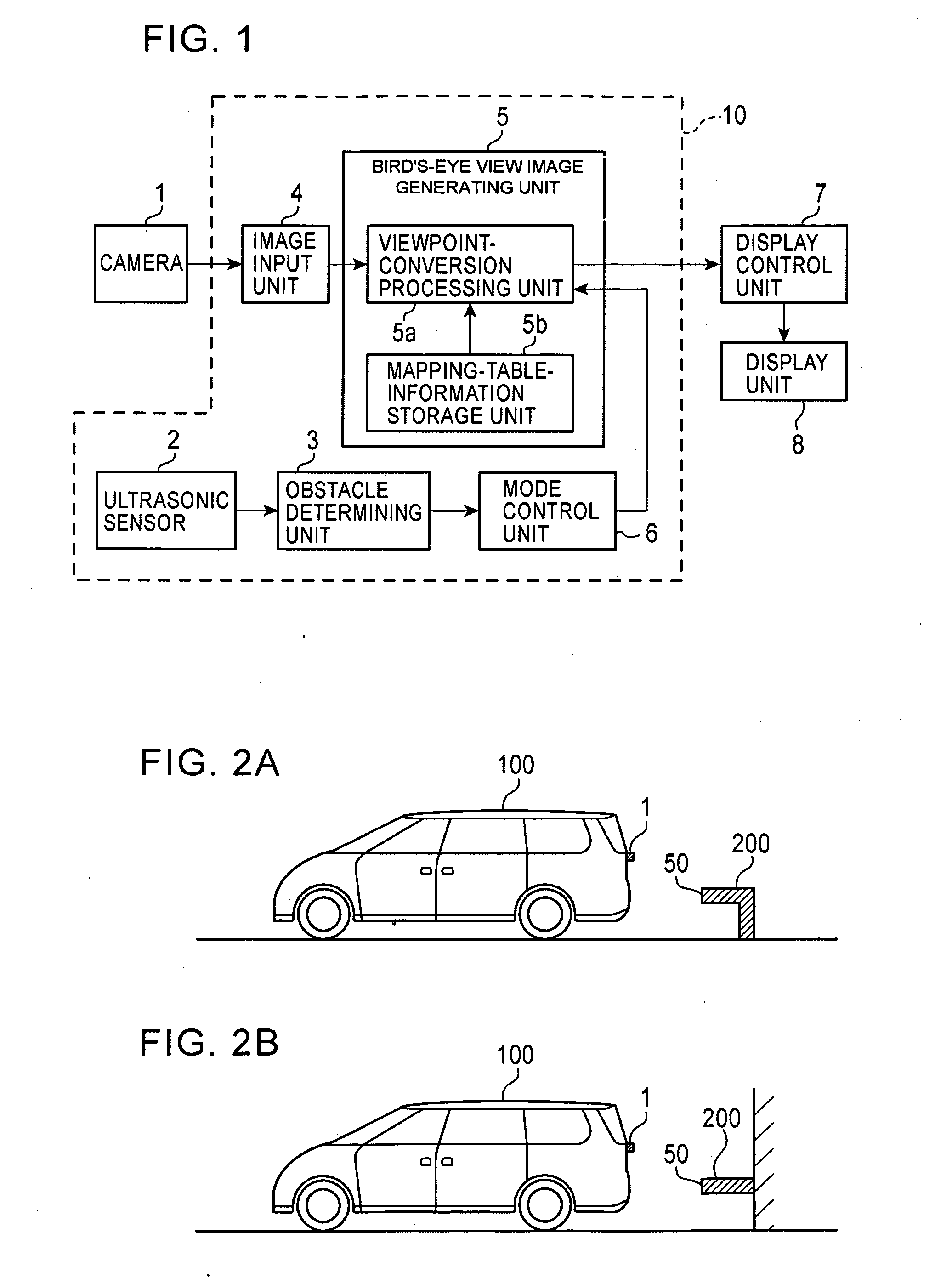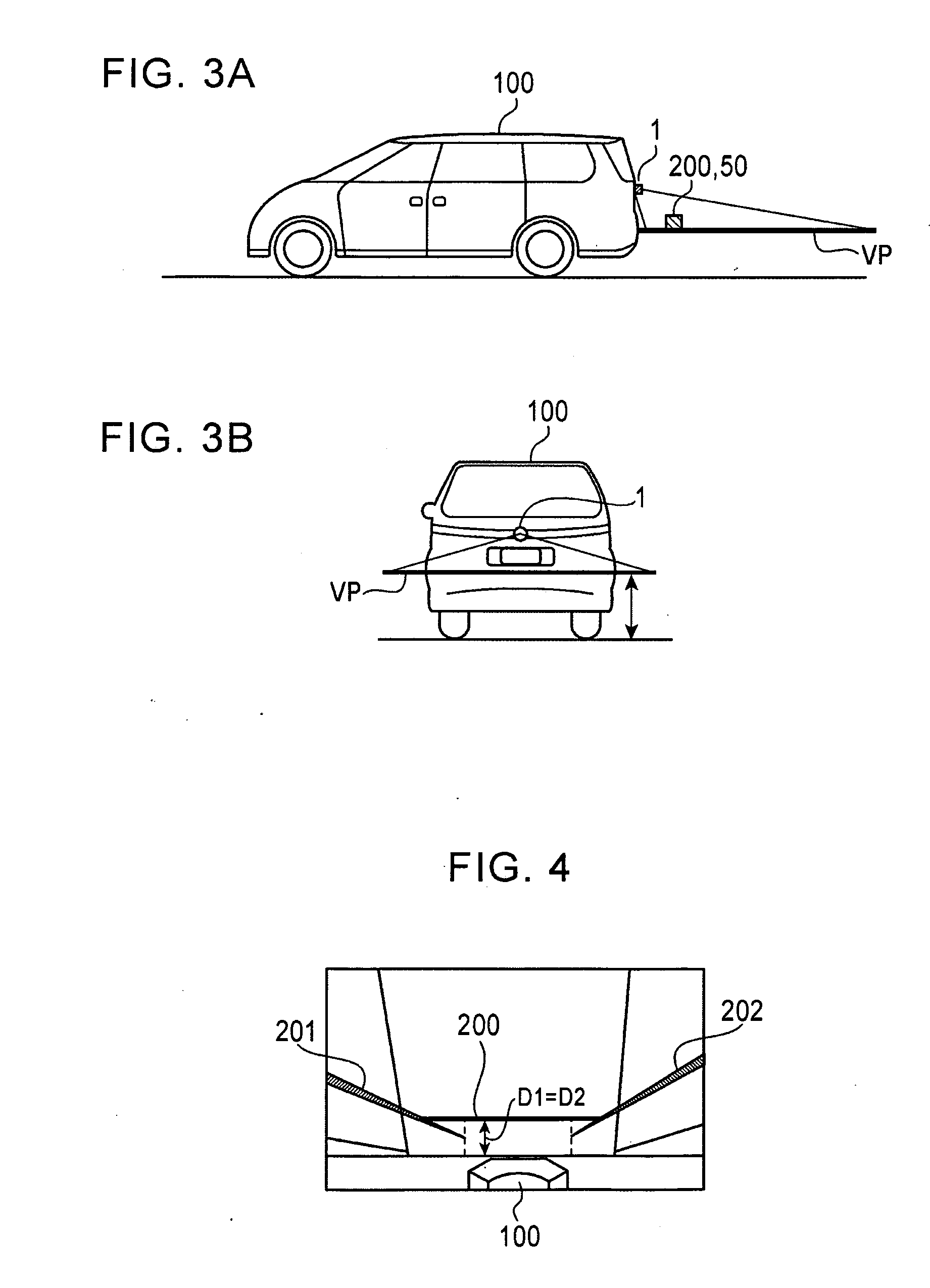Method and apparatus for generating a bird's-eye view image
a technology of generating methods and apparatuses, applied in the field of methods and apparatuses for generating birds'-eye view images, can solve the problems of driver confusion/mislead, driver may have a sense of discomfort, and cannot perform stopping operations
- Summary
- Abstract
- Description
- Claims
- Application Information
AI Technical Summary
Benefits of technology
Problems solved by technology
Method used
Image
Examples
first embodiment
[0038]A first embodiment of the present invention will be described below with reference to the accompanying drawings. FIG. 1 is a block diagram showing an example of the configuration of a bird's-eye view image generating apparatus 10 according to the first embodiment of the present invention. Referring to FIG. 1, a camera 1 is installed on a vehicle to photograph surroundings thereof. The camera 1 is disposed at a predetermined height, for example, on the surface of a rear portion of the vehicle to capture an image behind the vehicle. The camera 1 has, for example, a super-wide-angle lens such as a fisheye lens, and is capable of photographing a wide range behind the vehicle.
[0039]An ultrasonic sensor 2 detects the presence / absence of an obstacle in surroundings of the vehicle and also detects the distance from the vehicle to the obstacle based on a reflected wave of a transmitted ultrasonic wave. The ultrasonic sensor 2 has a sensor head that transmits the ultrasonic wave and rec...
second embodiment
[0062]Next, a second embodiment of the present invention will be described with reference to the accompanying drawings. FIG. 6 is a block diagram showing an example of the configuration of a bird's-eye view image generating apparatus 20 according to a second embodiment of the present invention. In FIG. 6, units denoted by the same reference numerals as those shown in FIG. 1 have the same functions, and thus the descriptions thereof will not be given below.
[0063]The second embodiment shown in FIG. 6 differs from the first embodiment shown in FIG. 1 in at least that a viewpoint-conversion processing unit 5c in the bird's-eye view image generating unit 5 performs a different type of processing than that performed by the viewpoint-conversion processing unit 5a of the first embodiment. That is, instead of the viewpoint-conversion processing unit 5a shown in FIG. 1, in the configuration in the second embodiment shown in FIG. 6 the viewpoint-conversion processing unit 5c performs a differe...
third embodiment
[0068]Next, a third embodiment of the present invention will be described with reference to the accompanying drawings. FIG. 8 is a block diagram showing an example of the configuration of a bird's-eye view image generating apparatus 30 according to a third embodiment of the present invention. In FIG. 8, units denoted by the same reference numerals as those shown in FIG. 1 have the same functions, and thus the descriptions thereof will not be given below.
[0069]The third embodiment shown in FIG. 8 differs from the first embodiment shown in FIG. 1 in at least that a mode control unit 16 performs different processing from that performed by the mode control unit 6 in the first embodiment. That is, the configuration in the third embodiment shown in FIG. 8 includes a mode control unit 16 that performs different processing, as compared to the mode control unit 6 shown in FIG. 1. The third embodiment may have a configuration in which a vehicle movement-amount detecting unit 17 and a table st...
PUM
 Login to View More
Login to View More Abstract
Description
Claims
Application Information
 Login to View More
Login to View More - R&D
- Intellectual Property
- Life Sciences
- Materials
- Tech Scout
- Unparalleled Data Quality
- Higher Quality Content
- 60% Fewer Hallucinations
Browse by: Latest US Patents, China's latest patents, Technical Efficacy Thesaurus, Application Domain, Technology Topic, Popular Technical Reports.
© 2025 PatSnap. All rights reserved.Legal|Privacy policy|Modern Slavery Act Transparency Statement|Sitemap|About US| Contact US: help@patsnap.com



